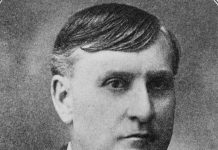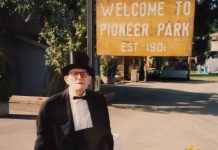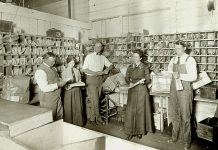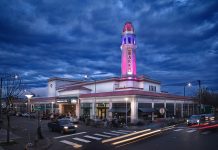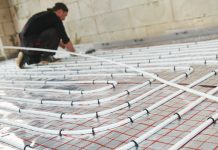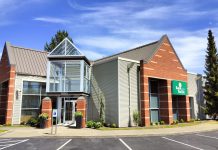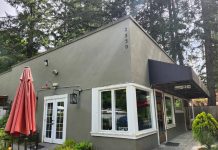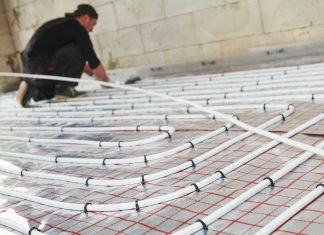Montague & McHugh is a historic building in downtown Bellingham. You might recognize it by its faded pink-gray brick, or maybe the Carnegie Library mural by local artist Lanny Little. Today, it’s known as the Crown Plaza building. But first, it experienced a long and fascinating history, as an elegant department store, a plant for bomber parts and more. Its history echoes Bellingham’s own transformations over time.
Beginnings
Business partners Thomas McHugh and Bernard Montague opened their first store in New Whatcom in 1890. Their firm lived on even after Montague’s death in 1923, as McHugh began plans for a new building.
The Montague & McHugh department store opened in 1927 as one of Bellingham’s finest businesses. It sold high-quality apparel and furnishings and had an optician, beauty parlor, music department, tearoom, ballroom and more. McHugh opened the ballroom and tearoom to the public, charging for nothing but food.

It also boasted the finest conveniences and technology of the time, including a pneumatic tube system for currency and sales transactions. Its tearoom also boasted modern appliances, including air conditioning!
Unfortunately, like other businesses of the time, Montague & McHugh was hit hard by the Depression. The building went into the receivership by 1932 and the firm went out of business.
“Thomas McHugh … believed the economic prosperity of the 1920s was going to last and overinvested in his optimism,” archivist and historian Jeff Jewell said. “Montague & McHugh, as a business, was a Bellingham institution here since the 1890s boom days and to see it go out like that after investing so much in the future was a crushing defeat.”
The building stayed vacant for a long time. In 1939, it was remodeled into offices and stores and became the 114 Building, said Jewell. Bigger changes came when Boeing moved in.
Boeing
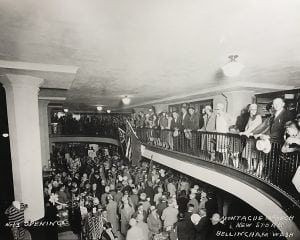
In 1943, the Boeing Aircraft Company in Seattle struggled to meet the demand for aircraft as World War II raged on. The company developed new plants throughout Western Washington to lighten the load and Bellingham was selected.
The 114 was chosen and converted into a sub-assembly plant. Production began after substantial advertisements in The Bellingham Herald, and men and women alike made parts for the B-17 Flying Fortress.
“The new sub-assembly plant announced for Bellingham will share in making this scourge of the Axis,” The Bellingham Herald declared on August 19, 1943.
Later, when B-17s discontinued, the plant made parts for the B-29 Superfortress. Each part would be trucked to Seattle, installed on bombers and shipped to the front.
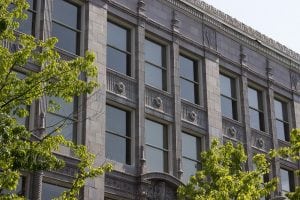
Beyond lunchtime traffic problems, steadfast patriotism prevailed through The Bellingham Herald’s reporting of assembly plant life. The plant won awards for excellence in production, attendance and war bond participation. “While this contribution may be small,” the paper wrote, “it is vital to the success of the program of turning out the maximum number of heavy bombers on all fighting fronts.”
As the war went on, the Bellingham plant produced parts for hundreds of bombers. After the surrender of Japan, however, Boeing announced the shutdown of several plants. Bellingham’s plant laid off its 290 employees one month later, the news broadcasting over company loudspeakers.
Everything ended with a poetic piece on September 6, “The trained fingers and gossipy little rivet guns which stitched an aluminum nightmare to counter the Axis dreams of world conquest were idle today at Boeing’s birthday of the B-17 Flying Fortress and the mighty B-29 Superfortress.”
The Bon Marche
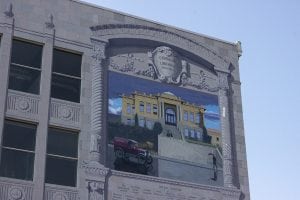
Montague & McHugh was built by internationally famous architect John Graham. Graham was responsible for several buildings in Seattle, including the Bon Marche department store. In an interesting coincidence, Montague & McHugh also became a Bon Marche in 1957. It had various minor uses following the war, but becoming a department store was its next big reinvention.
“The Bon” was a quality store with an elegantly high ceiling and carpeted floor. At the time, department stores used to provide many services and the Bon was no exception.
Like other department stores of the time, it was the equivalent of a mall, offering a shopping “experience” from clothing to hairdressing to dining. Many people wore their Sunday best just to shop, according to Bellingham city planner Jackie Lynch.
The Bon stayed downtown until 1988, when it moved into the newly-built Bellis Fair Mall and eventually became Macy’s. Other businesses did the same, leaving downtown Bellingham empty. Montague & McHugh was vacant once again.
“The Bon’s move to the new Bellis Fair Mall in 1988 had an effect on downtown that must have been similar to the Montague & McHugh closing almost a half-century earlier,” Jewell said.
Today
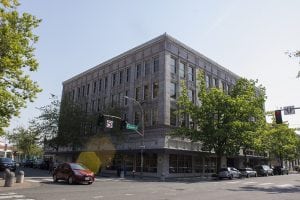
The 114 took time to the recover from the The Bon’s exodus. It was sold and used for varied events, including the Allied Arts Holiday Festival. Eventually, it was sold to the Crown Plaza Corporation in the late 1980s. Crown Plaza moved in and the building was remodeled.
Today, it flourishes as a mixed office and retail space. Just outside, one can circle around and visit the Daisy Café, Sandalwood Salon & Spa and Chocolate Necessities. Inside, offices and other spaces thrive, including the The Eureka Room (an escape room game) and the Hearing, Speech & Deaf Center.
Montague & McHugh is a bustling building once again. Both customers and business owners keep the area vibrant and alive, just as it was during the era of extravagant shops and wartime bombers.
This piece of Bellingham history has its ups and downs. But it continues to adapt, grow and thrive – much like the city itself.






